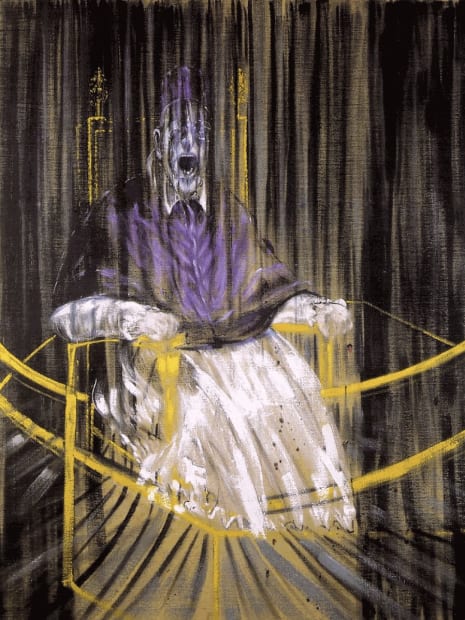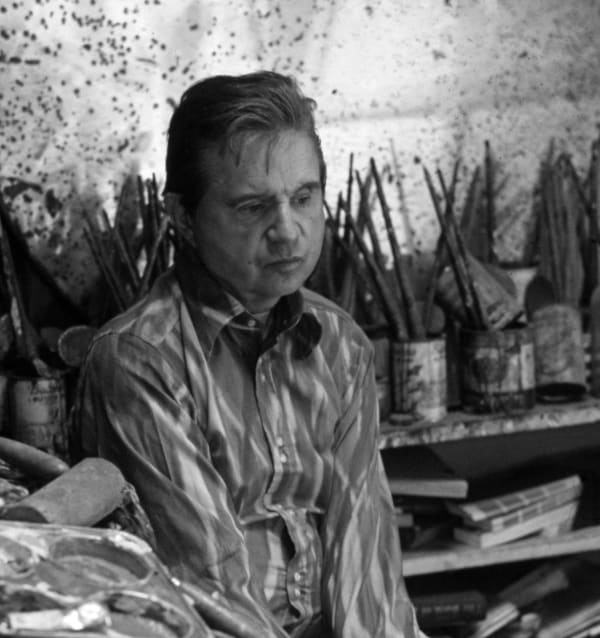-

STUDY AFTER VELÁZQUEZ'S PORTRAIT OF POPE INNOCENT X, 1953
Oil on canvas, 153 x 118 cm
©The Estate of Francis Bacon, image reproduced for educational purposes.
-
I loathe my own face, and I’ve done self-portraits because I’ve had nobody else to do.
- Francis BaconFrancis Bacon’s works on paper offer a rare glimpse into his process, though he famously denied using preparatory sketches. The surviving drawings, collages, and studies reveal a restless experimentation, figures emerging from smudges, lines circling heads and limbs like containment marks. Many were made in secret, often given to friends or destroyed before exhibitions. Unlike his monumental canvases, these paper works feel intimate and immediate, tracing the movement of thought before it hardened into paint. They expose Bacon’s fascination with distortion and flesh at its most fragile, proving that even his smallest gestures carried the same tension between control and chaos that defined his art.



